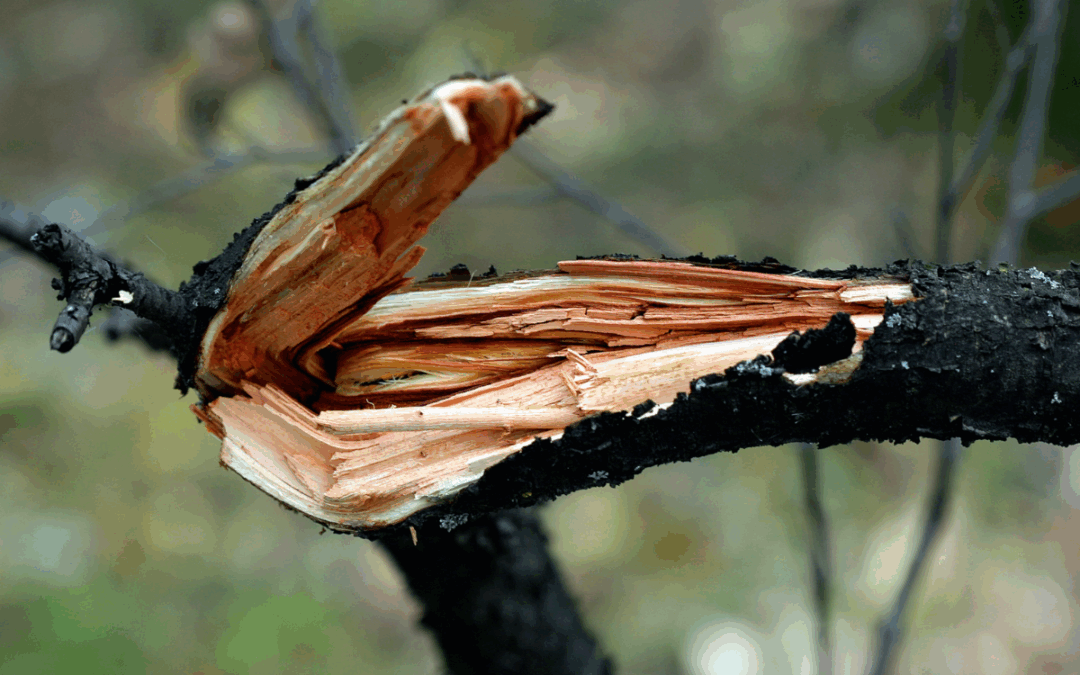If you’ve ever watched a tree limb snap unexpectedly during a storm—or even on a calm day—you know just how dangerous brittle trees can be. As trees age or undergo stress, their branches can become weak and prone to breakage, posing a risk to your home, your landscape, and your safety.
At Grade-A Tree Care, we see the effects of brittle trees across the Kansas City area, especially in late summer when heat and drought begin to take a toll. Here’s what you need to know about brittle trees, how to spot them, and what to do if you have one in your yard.
What Makes a Tree Brittle?
Brittle trees are often the result of internal or external stressors that weaken the wood structure. Some common causes include:
1. Heat and Drought Stress
Extended dry conditions, especially in late summer, can cause the wood to lose moisture and flexibility. This makes branches more prone to cracking and breaking—even under minimal weight or wind.
2. Age and Natural Decay
Older trees naturally lose flexibility over time. As decay sets in or as limbs become hollow, the tree becomes more susceptible to sudden breakage.
3. Pests and Disease
Wood-boring insects, fungal infections, and other diseases can compromise the structural integrity of a tree from the inside out—often without visible symptoms until it’s too late.
4. Poor Pruning Practices
Incorrect cuts or topping can weaken the structure of a tree. Poorly pruned limbs may grow back with weak attachments, making them more likely to break.
Tree Species Known for Brittle Wood
While any tree can become brittle under stress, certain species are more naturally prone to weak wood:
• Silver Maple
• Bradford Pear
• Boxelder
• Siberian Elm
• Cottonwood
These fast-growing trees are common in the Kansas City area but often develop weak branch structures over time. If you have one on your property, regular inspections are especially important.
Why Brittle Trees Are a Hazard
Brittle trees aren’t just an aesthetic issue—they’re a serious safety risk.
They can:
- Drop large limbs without warning
- Damage roofs, vehicles, or fences
- Fall onto power lines or walkways
- Pose liability risks for homeowners
This is particularly dangerous during Kansas City’s late summer storm season, when wind and heavy rain can trigger limb failure.
Signs Your Tree May Be Brittle
Look for:
- Cracks or splits in major limbs
- Hollow-sounding branches
- Dead or leafless limbs in the canopy
- Signs of decay or fungus at the base
- Large limbs crossing or rubbing against each other
If you’re unsure, our certified arborists can evaluate your tree’s structure and health during a free inspection.
What to Do About a Brittle Tree
Brittle trees can often be managed with corrective pruning, structural support, or strategic removal. Our team will:
- Assess risk level
- Recommend treatment or removal based on condition
- Handle all work safely and professionally
In some cases, replacing a brittle or declining tree with a stronger species is the best long-term option.
Get a Professional Assessment Before the Next Storm
If you suspect one of your trees is brittle—or just want peace of mind heading into storm season—Grade-A Tree Care is here to help. We offer honest advice, safe service, and proactive solutions to keep your home and landscape protected.
Call 816-214-6255 or visit gradeatree.com to schedule your free inspection today.

Recent Comments